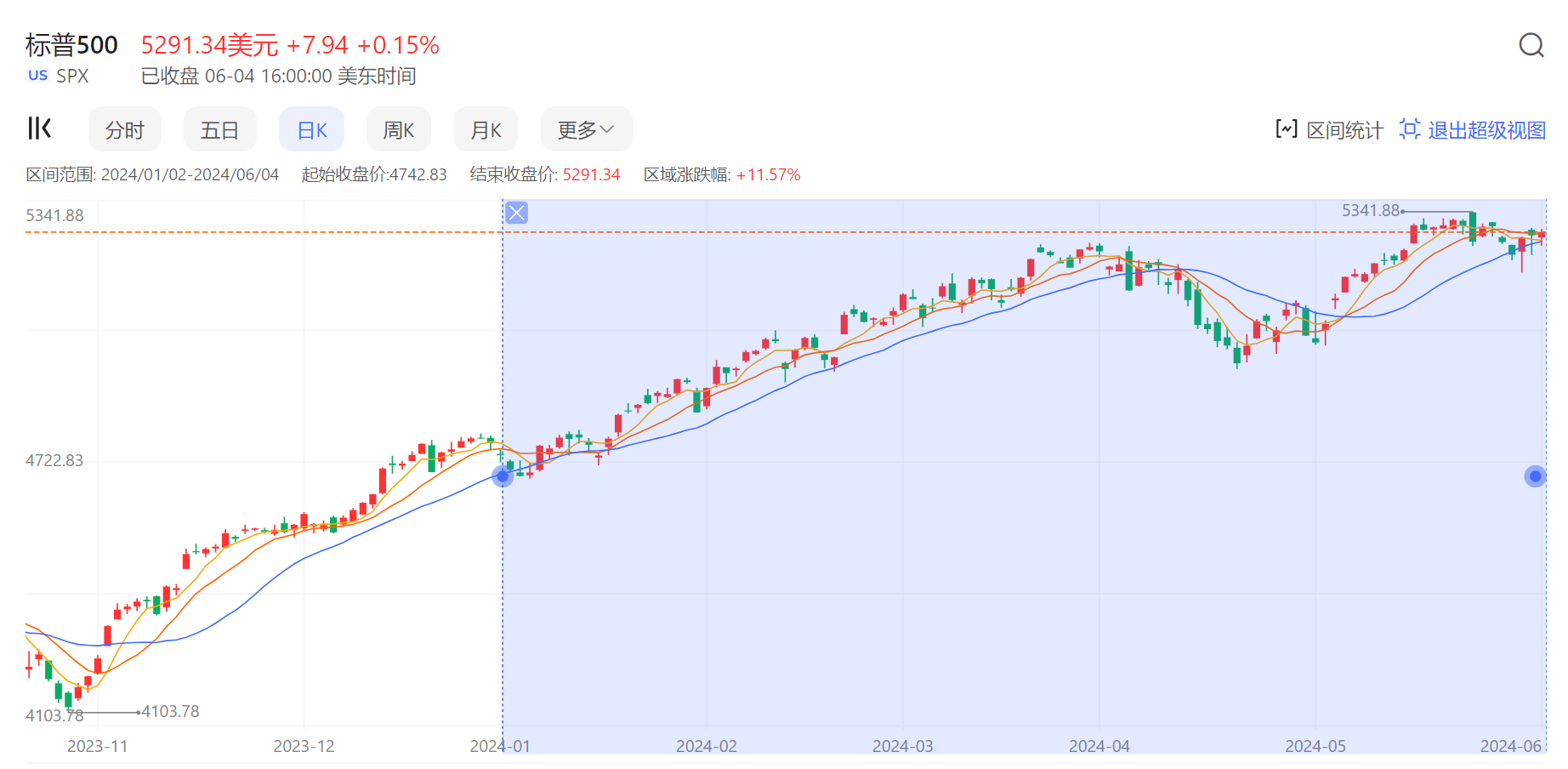Wells Fargo says S & P 500 could reach 5,700 by end of next year
The Wells Fargo Investment Institute said that while it may be overly optimistic to expect U.S. stocks to hit new highs before the November election, the election-related rally could expand further in 2025.。

As the US stock market continues to climb, investors are becoming increasingly concerned about when this bull market will end.
However, according to data from the investment department of Wells Fargo, this bull market may continue for a considerable period of time: in the past three US presidential elections and the following year, the US stock market has risen an average of 41.8%.
This year is the year of the US presidential election, and the US stock market has performed well. Since the beginning of this year, the S&P 500 index has risen by over 10%.

The investment research institute of Wells Fargo Bank stated that while expecting the US stock market to reach a new high before the November elections may be overly optimistic, the election related upward momentum may further expand in 2025.
In Monday's latest report, Jeremy Folsom, investment strategy analyst at the bank, wrote: So far, in 2024, the S&P 500 index has performed well compared to past election years. However, looking ahead to 2025, we see potential upward potential, based both on historical performance and our goals.
Folsom expects the S&P 500 index to reach a historic high of 5700 points by the end of next year, partly due to significant gains in the US stock market before and after the 2012, 2016, and 2020 presidential elections.
The Folsom team further explained that from early 2012 to the end of 2013, the S&P 500 index rose by 47%, and there were substantial gains during the following two US presidential elections.
Folsom also stated that although cash and cash substitutes are currently attractive, considering its expectations of interest rate trends, the bank believes that this is not a good place for long-term funding, as the Federal Reserve's interest rate cycle is gradually showing characteristics of low interest rates.
Disclaimer: The views in this article are from the original Creator and do not represent the views or position of Hawk Insight. The content of the article is for reference, communication and learning only, and does not constitute investment advice. If it involves copyright issues, please contact us for deletion.